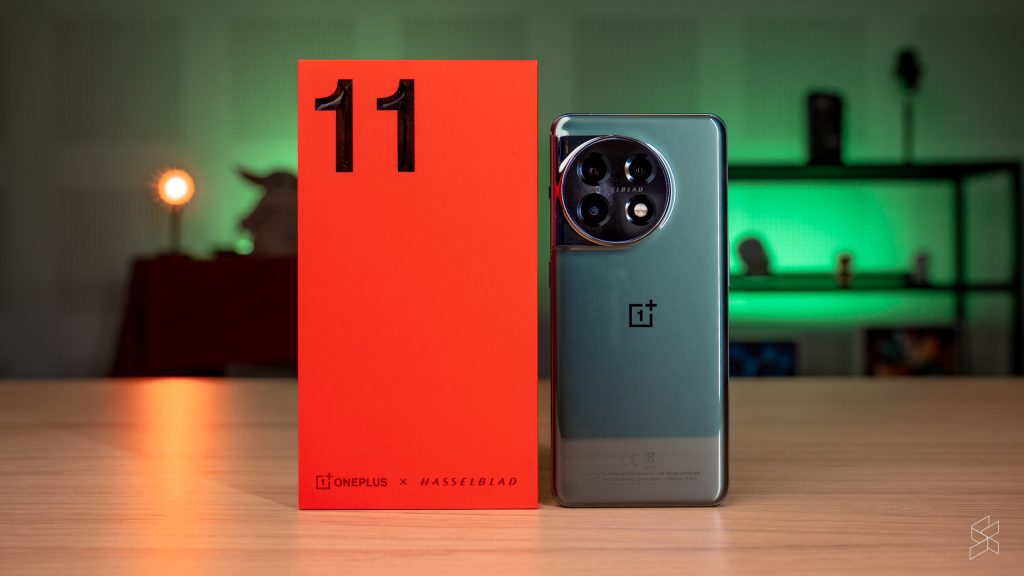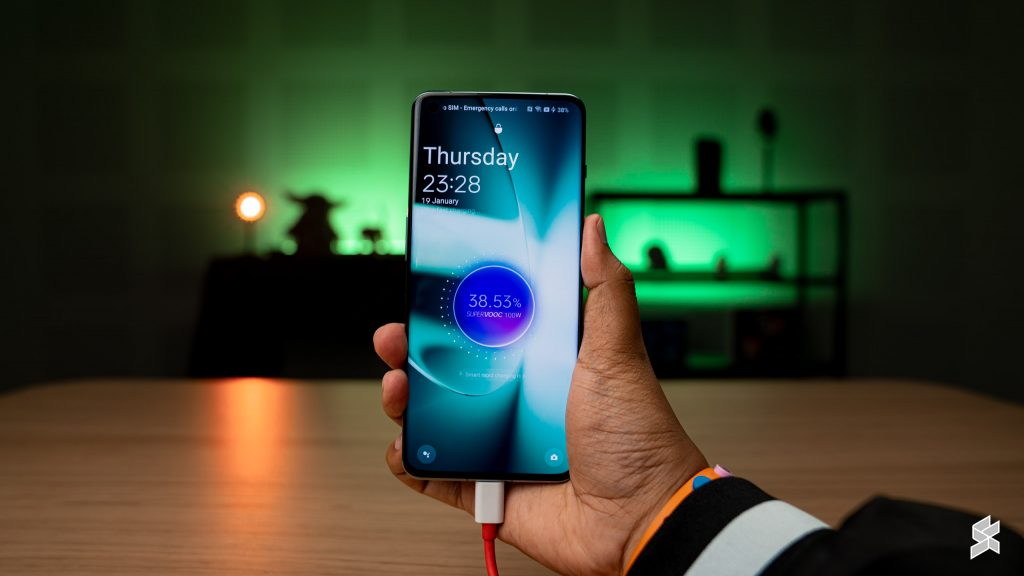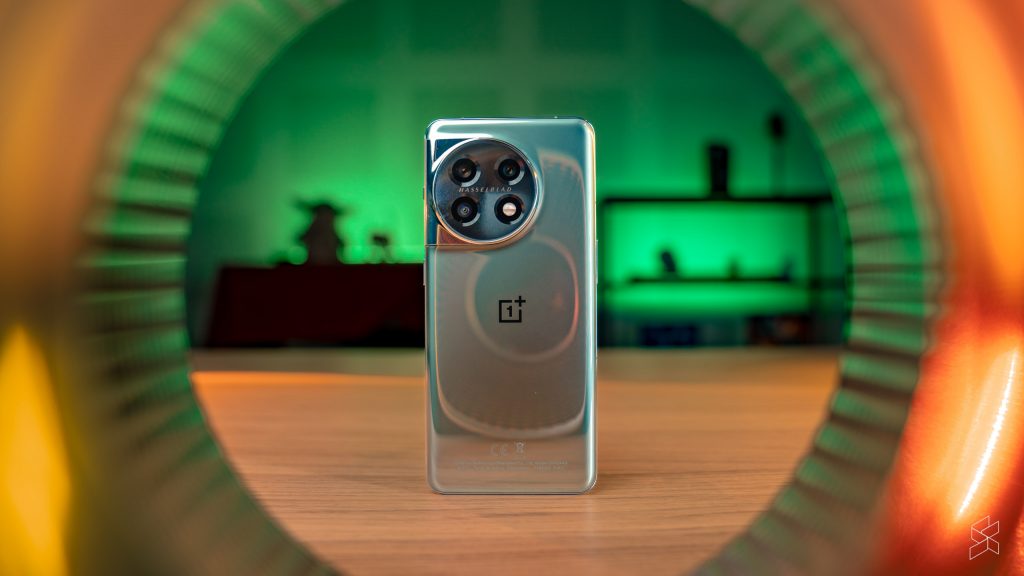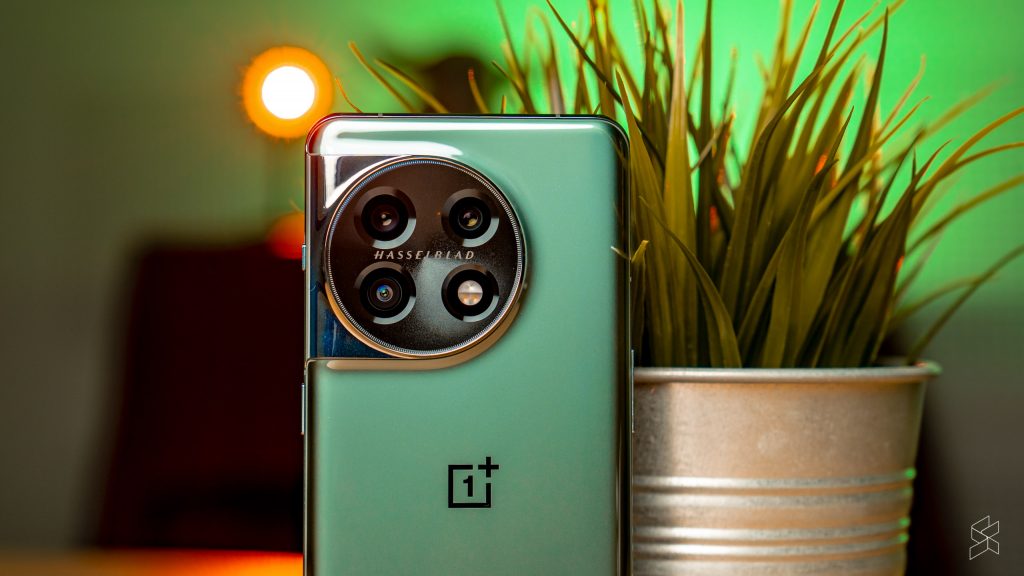Exactly a month after the OnePlus 11 was launched in China, the latest flagship from the Never Settle brand has finally received its global debut. As expected, even though we had to abide by a strict embargo withholding the specs, they’re pretty much exactly the same as the Chinese model.
OnePlus 11 pricing and availability

The one new piece of information revealed today are configurations and pricing. Unlike in China, the OnePlus 11 is available with a base RAM of 8GB and jumps straight to 16GB, skipping the 12GB option entirely. You also get either 128 or 256GB of storage, with no news of a range-topping 512GB model. Pricing is as follows:
- 8GB RAM + 128GB storage – USD699 (about RM3,007), EUR829 (about RM3,807), GBP729 (about RM3,756)
- 16GB RAM + 256GB storage – USD799 (about RM3,438), EUR899 (about RM4,128), GBP799 (about RM4,116)
That’s quite a big jump from prices in China. To recap, the phone is offered there starting at CNY3,999 (about RM2,536), and that’s with 12GB of RAM and 256GB of storage. Even the top-of-the-line variant with 16GB of RAM and 512GB of storage retails at CNY4,899 (about RM3,108), which is barely any more expensive than the cheapest US-spec model.
However, this still represents a significant saving over outgoing OnePlus 10 Pro, which was priced at RM4,199 with 12GB of RAM and 256GB of storage. Official Malaysian pricing and availability will be revealed at the local launch event on February 14.
OnePlus 11 specs and features

Powering the OnePlus 11 is the same Qualcomm Snapdragon 8 Gen 2 chip as the Chinese model. This is the vanilla version shared with phones like the iQoo 11—another BBK device—and not the “For Galaxy” one found in the new Samsung Galaxy S23 series. That one is a timed exclusive and is currently unavailable to other manufacturers.
Still, the standard processor should be more than fast enough for most users, with OnePlus boasting a 35% increase in CPU performance, 40% greater efficiency, a 25% faster GPU and 35x faster AI processing over the 8 Gen 1 in the OnePlus 10 Pro.
The use of faster 3,700MHz LPDDR5X RAM also results in a 30% wider bandwidth and 15% greater power efficiency compared to 3,200MHz LPDDR5 RAM. As with the OnePlus 10T, the 11 is cooled by a cryo-velocity vapour chamber but adds a dedicated crystal graphene layer to the mid-frame and display.
All this is juiced by a 5,000mAh battery that’s the same size as the 10 Pro, and 200mAh larger than the 10T. This appears to have necessitated a downgrade from the insane 150W SuperVOOC fast charging in the latter to a still-impressive 100W, which charges the phone fully in 25 minutes and nets you 65% charge in just 15 minutes. Unfortunately, there’s also no wireless charging here, unlike the 10 Pro.

Sitting at the front of the phone is a 6.7-inch curved AMOLED touchscreen with a resolution of 3,216×1,440 pixels (525ppi), a peak brightness of 1,300 nits and an adaptive refresh rate of between 1 and 120Hz. It also supports Dolby Vision HDR and comes with LTPO 3.0 technology that adjusts not only the refresh rate but also the touch sampling rate and accuracy, helping to reduce power consumption. It’s covered by Gorilla Glass Victus for improved drop protection over the 10T’s Gorilla Glass 5.
Around the back, you’ll find a Hasselblad triple-camera setup as per the 10 Pro, with the main camera and ultra-wide swapping pixel counts. The 50MP camera uses a Sony IMX890 sensor and features optical image stabilisation and an f/1.8 aperture lens, while the 48MP ultra-wide has a Sony IMX581 sensor sitting behind an f/2.2 aperture lens.
But the biggest change concerns the 2x telephoto shooter, which uses an IMX709 sensor that bumps up the pixel count from a measly 8MP to 32MP, in addition to featuring a larger f/2.0 aperture. New for this year is an “accu-spectrum light colour identifier” that uses a 13-channel spectral sensor—up from the usual seven to eight channels—to deliver more light information for processing. Surprisingly, the selfie camera has gone back to a 16MP unit (down from 32MP on the 10 Pro) with an f/2.4 aperture.

The OnePlus 11 is also fitted with Dolby Atmos dual speakers that are said to be the largest ever fitted to a OnePlus phone, along with 5G and Bluetooth 5.3 connectivity, along with NFC and an under-display fingerprint sensor.
A new feature for the global model is support for the new WiFi 7, which is promised to deliver a faster and more stable connection than even WiFi 6E. Sporting a large circular camera bump said to be inspired by a black hole, the OnePlus 11 features a polished stainless steel frame and is available in either textured Titan Black or glossy Eternal Green.
Unlike in China, where the OnePlus 11 uses Oppo’s ColorOS 13, the global version comes with Android 13 skinned with OxygenOS 13, although the latter is really now just ColorOS in everything but name. The good news is that OnePlus is making good on its promise to offer four years of major Android updates and five years of security patches, matching Samsung.
We’ve reviewed the OnePlus 11, and you can watch it below:
Related reading
- OnePlus Pad: An Android tablet with a bizarre circular centre camera bump
- OnePlus 11 Malaysia review: I miss the old OnePlus
- OnePlus 11: This is your first look at OnePlus’s latest flagship in Malaysia, ahead of its Feb 7 launch
- OnePlus 11 passes SIRIM certification, Malaysian launch imminent?
- OnePlus 11: Snapdragon 8 Gen 2, Hasselblad cameras and alert slider but no wireless charging








